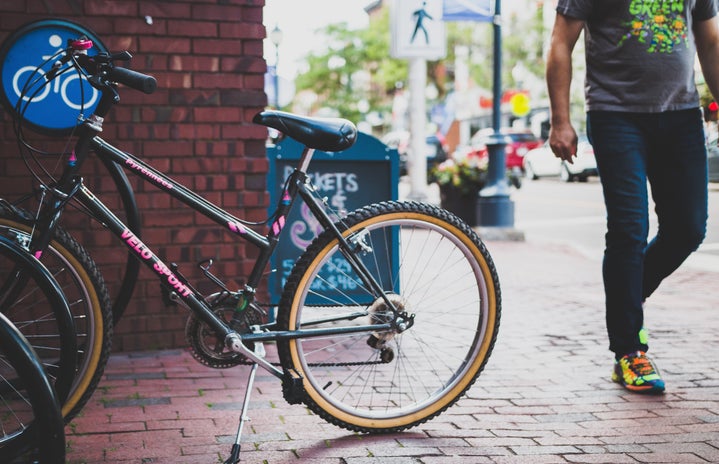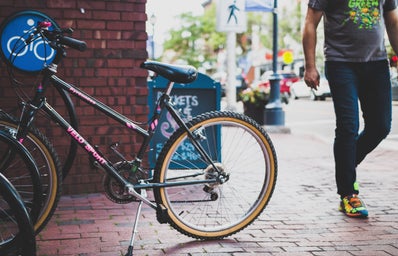Around midnight this past Thursday, one of my hall mates messaged our group chat saying that the showers had shut off unexpectedly. The water in the sinks was apparently gone too, as well as at the water fountain. Having never experienced a problem with the water here, it struck me as eerie that every source of it could magically run dry; it was like our dorm was the setting of a science fiction novel.
Moments later, our CA confirmed that it wasn’t in fact an alien invasion or a paranormal interference but a boil alert. I had heard of these happening at Kenyon before, but the sudden realization that something so essential as water was unsafe to consume seriously frightened me. My first reaction was to text my friends from home to tell them how freaked out I was that I couldn’t drink from the water fountain. Living in their huge state university towns with tens of thousands of people and dependable water mains, they found it even scarier than I did. Where we grew up, water was clean, abundant, and always available. As we’ve moved away from our hometown for college, I suppose, water is another thing that differentiates our experiences.
The next thirty-six hours were certainly inconvenient, but I can’t complain about the thousands of bottles of water supplied to us for drinking and brushing our teeth. Even though it wasn’t coming out of the taps, Kenyon students were incredibly privileged to have clean water available at various places on campus for free. Although some students violated the two-bottle-per-person limit, it was incredibly easy to get the water we needed. I couldn’t stop myself from constantly thinking about the people who aren’t as lucky; for some, lacking clean water means there’s nothing to drink.
Still, there were concerns about the “Gambier Water Crisis,” as I overheard it characterized by someone on Middle Path. If the water was unsafe to drink, was it really safe to use for our showers? Would it harm our skin if we used it wash our face? These qualms seemed to be exacerbated by the lack of information given to students. We received a few emails in dark blue font stating that a water main had broken and that a company was on site to fix it—but what did that mean? What was wrong, exactly, with the water? What had contaminated it? And how could we be sure it when was finally safe again?
In the true nature of complacent college students, our concerns fell by the wayside when the entire campus received a text on Friday morning that the boil alert had been lifted. I was in Quest for Justice (or “Intro to Political Science,” for non-Kenyon readers) when one classmate who’d been concealing their phone saw the message and quickly spread the word, ending our discussion of John Locke and his own issues with his community.
In hindsight, the boil alert really wasn’t so agonizing as it was inconvenient. The apprehension we felt about the quality of our water—and our campus at large—was more of a side effect of the hassle of brushing your teeth with bottled water than true concern for the village of Gambier. Our tainted water went away, but for me, at least, many concerns remained.
How much trust can we place in the integrity of Kenyon’s resources? We take the incredibly healthy and accessible food at Peirce for granted, as well as the water for our showers and sinks. Drinking water, the main point of contention for the past week or so, is the most important resource we use at Kenyon. If the break of a water main that’s been happening somewhat regularly since last year compromises the availability of clean water, shouldn’t it signify an effort to replace the faulty system instead of continuing to patch it up?
Another anomaly of the boil alert that struck me was the sheer volume of waste the campus was able to produce in less than a day and a half. We were given plenty of bottled water, but not every student is mindful enough to toss the empty bottles into recycling. I passed at least a dozen trashcans overflowing with plastic bottles and soda cans that could’ve been recycled. The lack of water necessitated a switch to paper cups, plates, and utensils, too, which constituted a huge amount of additional waste. (The fact that each fork, spoon, and knife was individually wrapped in plastic drove me insane.)
Finally, something that left a bad taste in my mouth the past week has been the student body’s reaction to the boil alert. Yes, it’s incredibly annoying and inconvenient. Yes, you had to brush your teeth with bottled water. But you had bottled water. A period of a few dozen hours without water for Kenyon is a brief and solvable anomaly. For some societies, it’s a daily tragedy. We had to walk ten minutes to Peirce to get water; others have to walk miles to draw as much water as they can carry from a well and then bring it back.
Kenyon was rudely reminded of its culture of taking this place for granted during the boil alert. Despite our concerns—which are valid though they’re minimal—we seem to brush those suffering from a magnified version of our plight under the rug. Yes, the boil alert was troubling and inconvenient. That doesn’t mean, though, that we should lose sight of the privileges we enjoy at Kenyon during the next one.

